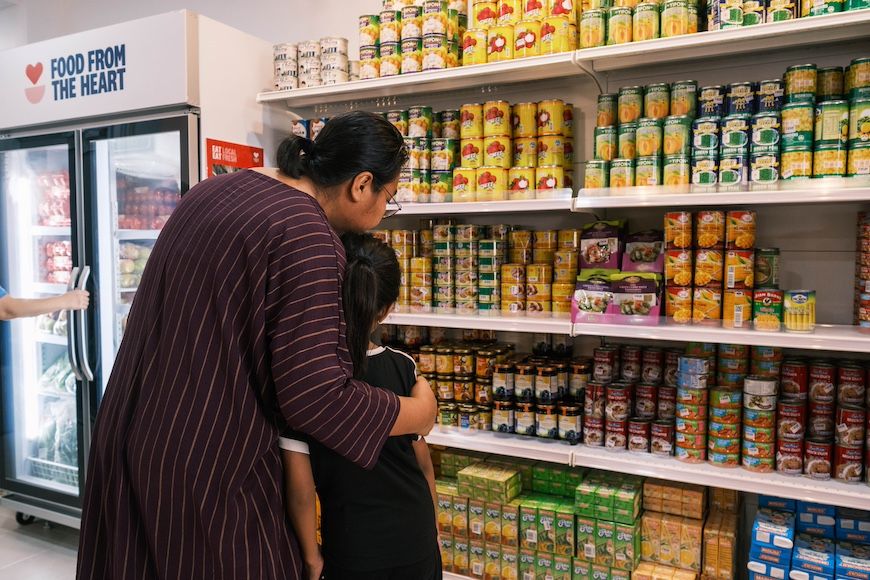Receive updates about our volunteering opportunities and latest happenings.
Published: 30 October 2025, Thursday

As highlighted by the Lien Centre for Social Innovation, food security goes beyond simply having food on the table. It refers to situations where individuals and families consistently have the means and access to obtain safe, nutritious food that supports a healthy and active life.
Household food insecurity, however, occurs when there is uncertainty or doubt about being able to maintain this access. Importantly, having meals each day does not always equate to being food secure, as a family may be able to eat, but the meals may lack the nutrition needed to sustain long-term well-being.
This distinction is crucial. When stereotypes reduce food insecurity to visible deprivation alone, they overlook these hidden signs of struggle. Many households in Singapore face such realities quietly, and their stories risk going unheard without a more nuanced understanding.
By now, many are familiar with the statistics that were shared in The Hunger Report (2019), which found that 10.4% of resident households faced some form of food insecurity within a year. Of these, 6.9% experienced moderate insecurity, where compromises had to be made on diet quality or quantity, while 3.5% were in severe situations, where access to sufficient meals was consistently uncertain.
The findings also highlighted patterns across household profiles. Families living in 1- and 2-room HDB flats were apparently more likely to experience food insecurity, and household heads were often individuals with lower educational qualifications, which can limit access to better-paying jobs. These factors, combined with financial pressures, increase vulnerability over time.
At the same time, such stereotypes can blur the reality of who is in need. For example, the perception that some groups, such as those often labelled under the “model minority” narrative, are unaffected by financial hardship means their experiences may be overlooked. This contributes to a gap in recognition, leaving many families facing food insecurity in silence.

To better understand these unseen challenges, it helps to look at the different dimensions that shape food security. As highlighted by McKay, Haines and Dunn, four interconnected factors determine whether households can consistently meet their nutritional needs:
Given these varying factors, severity levels vary across households too. For some, it begins with adjustments like reduced diet quality. In more challenging situations, adults may limit their own intake to shield children. At its most serious, children themselves may receive meals that are less frequent or less nutritious than needed for healthy growth.
Behind every instance of food insecurity are complex pressures that extend beyond the surface. While some challenges are financial, others are linked to circumstances that restrict a household’s ability to cope. Research points to a mix of both monetary and non-monetary factors, with financial strains emerging most often as the immediate drivers.
Some of the frequently cited reasons include:
These realities highlight that food insecurity in Singapore is rarely the result of a single setback. Instead, it often stems from overlapping difficulties that leave households without the stability needed to consistently secure nutritious meals.
Food insecurity does not discriminate and is present across all communities in Singapore. It is thus important for food assistance to be reliable, sustainable and consistent, ensuring that the food and support provided is nutritious and beneficial.
On top of distribution of food, practical solutions like knowing how to reduce food waste at both household and business levels can complement targeted support, ensuring that good food does not go to waste and instead reaches families who need it. Rallying your community and organising a food donation drive in support of organisations like Food from the Heart also plays a key role in alleviating food insecurity. Helping provide both immediate relief and a pathway towards a more inclusive and caring society.
